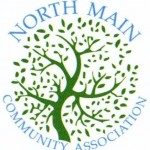Sec. 19-6.3. – Tree protection.
19-6.3.1. General.
(A) Purpose. Protection of existing tree cover is intended to preserve the visual and aesthetic qualities of Greenville; to encourage site design techniques that preserve the natural environment and enhance the developed environment; to control erosion, slippage, and sediment runoff into streams and waterways; to increase slope stability; and, to protect wildlife habitat and migration corridors. Preservation or provision of trees near structures also serves to conserve energy by reducing heating and cooling costs.
(B) Applicability. The requirements of this section shall apply to all existing and new development, except that the following developments and activities shall be exempt from this section:
(1) The removal of trees located on individual lots containing single-family detached dwellings;
(2) The removal of dead or naturally fallen trees, or trees that are found by the administrator to be a threat to the public health, safety, or welfare;
(3) The selective and limited removal of trees or vegetation necessary to obtain clear visibility at driveways or intersections, or for the purpose of performing authorized field survey work;
(4) The selective and limited clearing of utility easements to maintain their intended function; and
(5) The removal of trees or vegetation on land zoned or lawfully used for:
(a) Agricultural and forestry activities, including tree farms and approved forestry management practices, except that if a site is substantially cleared of trees pursuant to legitimate forestry activities, no development applications shall be accepted for 36 months from the date the clearing is completed; or
(b) Commercial garden centers, greenhouses, or nurseries.
19-6.3.2. Tree protection and replacement.
(A) Tree inventory required. A tree inventory shall be submitted as part of an application for a final development plan, site plan permit, and land disturbance permit. The inventory shall be in a form approved by the administrator and contain the information as required in the administrative manual.
(B) Tree protection and replacement.
(1) All properties to which this section applies shall provide and maintain a tree density of 15 tree credit units per acre or pro rata portion of an acre, excluding building footprints and the area of athletic fields and courts.
(2) The required tree density may be obtained by preserving existing trees and/or planting new trees which may include required street trees, interior parking lot landscaping, and heritage and historic tree replacements.
(3) Tree credit units are established for existing and new trees based on each tree’s caliper or diameter. The credit units are established in the administrative manual.
(4) The form, size, quality, and proportions of preserved and proposed trees must meet the guidelines outlined in the ANSI Z60.1 American Standard for Nursery Stock.
(5) Single-family residential subdivisions must comply with a required density factor of 15 units per acre, excluding individual single-family lots. This requirement may be met as an average for the total acreage of each phase of the subdivision development, rather than for each individual acre. Trees may be retained or planted along the street right-of-way, as buffer edge plantings along a development’s perimeter, in entranceways, or in common open space. Emphasis shall be placed upon retaining existing trees. It is the responsibility of the current property owner to maintain and manage the required trees per the standards of this ordinance.
(6) If the minimum protection standards are not met, or if trees are observed by the city to be injured or threatened, they may be deemed ineligible for meeting these requirements and additional trees will be required.
(C) Protection and replacement of heritage and historic trees.
(1) In order to protect significant trees, the city has established the heritage and historic tree designations. A heritage tree is any tree greater than 20 inches in diameter and a historic tree is any tree greater than 30 inches in diameter and is located within any required setback or buffer area. A heritage tree which is removed shall be replaced with a minimum of two four-inch caliper shade trees. A historic tree which is removed shall be replaced with a minimum of four four-inch caliper shade trees.
(a) New trees used to comply with heritage and historic tree replacement requirements shall not count toward the street tree requirements.
(b) New trees used to comply with heritage and historic tree replacement requirements shall not count toward the interior parking lot landscaping requirements.
(c) No construction, grading, equipment, or material storage, or any other activity, shall be allowed within the critical root zone of a heritage or historic tree unless the steps taken to adequately ensure the health of the tree are submitted to the parks and recreation department in writing.
(d) Heritage or historic trees shall not be cut, removed, pushed over, killed, harmed, trimmed, sprayed, or destroyed without written approval by the parks and recreation department.
(e) Permits for trimming, removing or replacing heritage or historic trees can be obtained by contacting the parks and recreation department.
(2) If the administrator determines that there is insufficient space on the property to replace a heritage or historic tree, the replacement tree may be planted on public property approved by the administrator or a fee based on market price in lieu of the replacement cost may be paid to the City of Greenville tree foundation.
19-6.3.3. Tree protection during construction.
(A) Protective fencing.
(1) When and where required. Before grading begins, fencing shall be required, at a minimum, around the critical root zone of all trees that are to be preserved. Additional fencing shall be required around the critical root zone of trees on adjacent properties or located in a right-of-way.
(2) Type of fencing. All fencing required by this section shall be a minimum of four feet high and of durable construction; such as wood or metal fencing.
(3) Signs. Signs shall be installed on the protective fence visible on all sides of the fenced-in area (minimum one on each side and/or every 300 linear feet). The size of each sign must be a minimum of one foot by 1.5 feet and shall contain the following: “TREE PROTECTION ZONE: KEEP OUT.”
(4) Activity within a fenced tree protection zone. No construction, grading, parking, equipment, or material storage, or any other activity, shall be allowed within the fenced area.
(5) Maintenance of fencing. For existing trees to be counted toward required tree credits, they must be protected during the entire development period, beginning prior to the commencement of site work. Encroachment within the tree protection zone is permitted to allow the landscape contractor access to complete site work.
(B) Encroachments. Encroachments within the critical root zones of any tree being preserved to comply with required tree credits, or within designated tree protection zones, shall occur only in rare instances. If such an encroachment is anticipated, a written request must be made to the city parks and recreations administrator for allowance of encroachment. Request must detail preventative measures taken. If approved the following preventative measures shall be employed:
(1) Clearing activities. The removal of trees adjacent to a tree protection zone can cause inadvertent damage to the protected trees. Wherever possible, it is advisable to cut minimum two-foot trenches along the limits of land-disturbance, so as to cut, rather than tear, roots. Trenching is required for the protection of historic and heritage trees.
(2) Soil compaction. Where compaction might occur due to traffic or materials through the tree protection zone, the area must first be mulched with a minimum four-inch layer of processed pine bark or wood chips or a six-inch layer of pine straw. Equipment or materials storage shall not be allowed within tree protection areas.
(Code 1997, § 19-6.3; Ord. No. 2007-52, § 19-6.3, 7-9-2007; Ord. No. 2009-22, § 3(exh. C), 3-23-2009; Ord. No. 2011-18, 1-24-2011; Ord. No. 2013-66 , exh. A(19-6.3), 10-28-2013)

